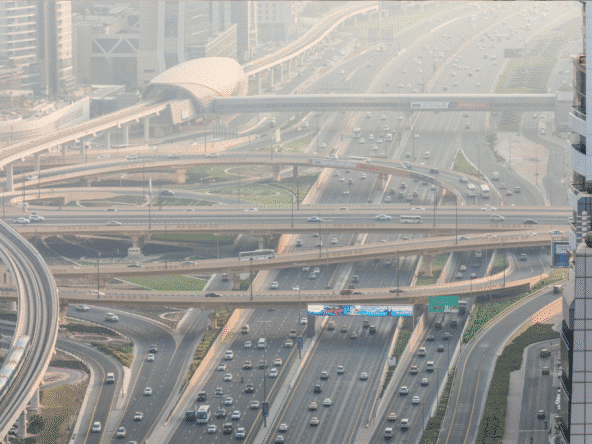The Islamic calendar is a lunar one, and as such, the beginning and end of months depend entirely on the sighting of the moon. As the holy month of Ramadan nears its end, Muslims around the world look to the sky in anticipation of the new moon marking the beginning of Shawwal. This transition signifies the celebration of Eid Al Fitr, one of the most significant holidays in Islam. However, in 2025, astronomers and Islamic scholars are predicting an unusual development—the Shawwal crescent may not be visible on the 29th night of Ramadan, leading to a full 30-day fast and potentially a longer Eid celebration.
What Is the Shawwal Crescent and Why Does It Matter?
Shawwal Moon Sighting: Tradition That Shapes Celebration
In Islamic tradition, each lunar month begins and ends with the sighting of the moon, making the calendar deeply tied to nature and spiritual observance. Shawwal, the month following Ramadan, begins when the crescent moon is sighted—signaling the end of fasting and the arrival of Eid Al Fitr.
If the crescent is seen on the 29th night of Ramadan, Eid is celebrated the next day. If not, the month completes 30 days, and Eid is observed the day after. This method, though rooted in centuries-old practice, often leads to variations in Eid dates across different countries—or even within the same country—impacting travel, work schedules, and family plans.
In 2025, a potential delay in the Shawwal crescent sighting could influence how millions prepare and celebrate. That’s why residents of DAMAC luxury apartments in Dubai value not just comfort and design—but also the flexibility and convenience these homes offer. From prime locations near mosques and shopping destinations to amenities that accommodate festive gatherings, Dubai’s high-end residences provide the perfect environment for celebrating Eid, whether it arrives on day 29 or day 30.
2025: A Year of Astronomical Uncertainty
Astronomers have forecasted that the Shawwal crescent will not be visible to the naked eye in many parts of the world on the 29th night of Ramadan 1446 AH. This prediction, based on moonset timings, solar elongation, and sky brightness, indicates that most Muslim communities may not observe the crescent until the following night.
This means fasting will extend to 30 days for the majority, with Eid Al Fitr being celebrated a day later than some may have initially expected. It’s a scenario that’s happened before, but in our fast-paced, globally connected world, these shifts can have wide-reaching effects—from travel plans to work holidays and family gatherings.
The Beauty of a 30-Day Ramadan
Embracing the Spiritual Blessings of an Extra Day of Fasting
While an extra day of fasting during Ramadan may seem like a challenge to some, many Muslims view it as an opportunity for added blessings. Fasting is not merely an obligation; it is a deeply spiritual journey. An additional day of fasting offers more time to strengthen one’s relationship with God, more opportunities to give charity, and more nights dedicated to prayer and reflection.
The Prophet Muhammad (PBUH) encouraged the completion of the full lunar cycle, and fasting for 30 days is considered a spiritual full circle. As such, the delay in sighting the Shawwal crescent can be seen as a divine gift, an additional day of spiritual growth and personal reflection that many embrace with open hearts.
Much like the experience at DAMAC Paramount Hotel Dubai , where every detail has been thoughtfully designed to cater to the most refined tastes, Ramadan offers an opportunity to reflect, indulge in spiritual nourishment, and experience luxury in the simplest forms. Whether it’s relaxing after a day of fasting in the comfort of a well-appointed suite or breaking your fast with family and friends in a beautiful dining setting, DAMAC Paramount ensures every moment during Ramadan is filled with peace and tranquility.
A Longer Celebration of Eid Al Fitr
Interestingly, the potential delay might also lead to a longer Eid celebration. In many cultures, Eid Al Fitr is celebrated for one to three days, depending on the country. With the holiday potentially falling closer to a weekend or overlapping with other public holidays due to the shift, people may find themselves with extended time off. This extended Eid period can mean more opportunities to connect with loved ones, travel, or simply relax after a month of spiritual devotion. Children, in particular, look forward to the festivities—new clothes, gifts, sweets, and joyful gatherings. For residents of luxurious communities like DAMAC Couture by Cavalli, these moments are often celebrated in style, with exclusive events and elegant spaces that elevate the spirit of Eid.
Regional Differences and Unity in Diversity
Eid Al Fitr: A Celebration of Diversity and Unity
One of the most fascinating aspects of Eid Al Fitr is how its timing can differ across the globe. In some countries, local moon sighting committees determine the start of Shawwal, while others follow national or international reports. This often results in a unique scenario where some Muslims are celebrating Eid while others are completing their final day of fasting.
In 2025, with the Shawwal crescent predicted to be particularly elusive, more regions may end up observing a 30-day Ramadan, potentially leading to a more synchronized global celebration. This unexpected unity serves as a powerful reminder of the shared spiritual journey of the global Muslim ummah—millions united by faith, even across borders.
At DAMAC Suburbia , this sense of community and connectedness is woven into everyday life. Located in a vibrant area near Jebel Ali, the development offers a blend of modern living and close-knit community values—perfect for celebrating occasions like Eid with neighbors, friends, and family. With thoughtfully designed spaces and convenient access to mosques, shopping, and leisure, DAMAC Suburbia creates a setting where tradition and lifestyle come together beautifully.
The Role of Technology in Moon Sighting
While traditional moon sighting methods still hold religious and cultural value, modern tools like telescopes, software simulations, and astronomical databases have added a scientific dimension to the process. Some Islamic scholars and authorities have begun integrating these tools to make informed decisions about lunar visibility.
In 2025, this technological input is what has led to the widespread prediction that the Shawwal crescent will not be visible on the 29th night. Though moon sighting remains a spiritual act, these scientific methods help manage expectations and prepare communities for potential changes to the Eid Al Fitr calendar.
Spiritual Reflections on Timing
Timing, in Islam, is more than logistics—it’s about divine wisdom. The delay of the Shawwal crescent and the lengthening of Ramadan offer a moment for reflection. Perhaps it’s a reminder not to rush through the spiritual journey. Perhaps it’s a call to savor the final moments of prayer and introspection before embracing the joy of Eid Al Fitr.
Each added day is a gift—another chance to seek forgiveness, give in charity, and make heartfelt du’a. And when Eid does arrive, the joy is even more profound after the anticipation. Similarly, Violet 4 represents the essence of embracing moments of serenity and reflection, offering luxury living that aligns with the deeper values of patience, peace, and gratitude.
Planning for the Unpredictable
With the possibility of a 30-day Ramadan, individuals, families, and communities are encouraged to prepare flexibly. Travel arrangements, holiday schedules, and event planning may need to account for this potential shift.
Employers and schools in Muslim-majority and minority countries alike can support observant Muslims by remaining adaptable. Celebrating Eid Al Fitr is a cornerstone of Islamic life, and recognizing its fluid timing is a step toward inclusivity and respect.
Global Implications of a Delayed Eid
Beyond the individual, a delayed Eid Al Fitr can have broader societal and economic implications. In many countries, Eid is a national holiday, and changes in its expected date can affect government offices, stock markets, and tourism.
For instance, in countries like Saudi Arabia, the UAE, Indonesia, and Pakistan, Eid celebrations often mean mass travel, increased shopping, and vibrant public events. A longer Ramadan might push these activities a day or two further, impacting everything from airline bookings to hotel reservations. Similarly, developments like Canal Crown reflect the growing demand for luxury accommodations and prime locations, catering to the influx of travelers and residents who celebrate this important occasion.
Embracing the Unseen Moon
The title “Shawwal Crescent Unseen” is more than a statement of astronomy—it’s a metaphor for the hidden blessings in divine timing. The moon may not appear when expected, but it’s delay can be just as meaningful. It teaches patience, humility, and the beauty of submission to a higher plan.
Whether Eid Al Fitr falls on the 30th or 31st day, its essence remains unchanged: a celebration of faith, community, and gratitude. The spiritual rewards of Ramadan are not measured by its length but by the devotion it inspires.
Related Topics
CORPORATE TAX UAE
How DAMAC Properties Aligns with Eid Al Fitr Festivities and Lifestyle Demand
DAMAC Properties, a leading luxury real estate developer in the Middle East, often sees increased interest during festive seasons like Eid Al Fitr, especially when holidays are extended due to a 30-day Ramadan. As families look to upgrade their lifestyles and invest in new homes, Damac’s high-end offerings—from resort-style villas to premium apartments—become particularly appealing. The festive spirit of Eid Al Fitr drives demand for celebratory gatherings, spacious living, and holiday getaways, all of which DAMAC properties are designed to accommodate. With flexible payment plans and exclusive Eid Al Fitr promotions, the brand aligns luxury living with seasonal joy and family togetherness.




